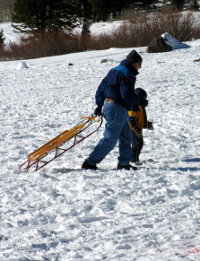Many nights at lights-out, my kids will ask me to tell them a story. Sometimes I relate a bit of science or history; sometimes it’s something autobiographical; and sometimes I just make up a story they’ll like.
Last night I was too sleepy to do any of those, but they asked, so I started giving my usual cop-out spiel:
“Once upon a time, there were two boys, Jonah and Archer, who were so sleepy that they snuggled under their blankets…”
but Archer said, “No! Not about us!”
so I said, “Once upon a time, there was a dad who was so sleepy…”
but Archer said, “No!”
so I said, “Once upon a time, there was a grandpa who lived far away…”
but Archer said, “No! No Glicksteins! Tell a superhero story!”
So I thought a moment and said, “Once upon a time, Batman wanted some ice cream.”
Archer, knowing my pacifist tendencies in storytelling, said, “No, with fighting!”
So I said, “Hold your horses. How do you know there’s not going to be fighting in this story?” I continued, “Batman went to the ice cream store and said” — and here I put on my best iron-willed, tortured, costumed-vigilante voice — “‘One scoop of chocolate, please.’ The man behind the counter said, ‘I’m sorry, Batman, but we’re out of chocolate.’ So… Batman fought with the man behind the counter!”
Archer said, “No! Batman wouldn’t fight with the ice cream man!”
I said, “You’re right. OK: once upon a time, Batman wanted some ice cream. So he went to the ice cream store and said, ‘One scoop of chocolate, please.’ But the man behind the counter said, ‘I’m sorry, Batman, but I just sold the last scoop of chocolate to Spider-Man over there.’ So… Batman fought with Spider-Man!”
At this point, Jonah, who’d been listening in quiet amusement, chimed in, “But Batman is DC and Spider-Man is Marvel!” Which impressed the hell out of me.
So I said, “You’re right! So there could never be a Batman/Spider-Man crossover, could there? OK… Once upon a time, Spider-Man wanted some ice cream. So he went to the ice cream store and said, ‘One scoop of chocolate, please. No, wait: vanilla. Oh hold on: strawberry. No, rocky road!’ The man behind the counter started to get impatient. ‘Please make your selection, sir,’ he said. So Spider-Man said, ‘I really want cookies and cream. Wait, I mean pralines and cream! Ooh, maybe I should get some sherbet instead. Lemon — no, orange! Wait, rainbow! Eh… maybe I should stick with chocolate…’ Now the man behind the counter wasn’t just impatient, he was angry. His skin turned green, and he got really big and burst out of his shirt — he was the Incredible Hulk! And he fought with Spider-Man.”
Archer: “They wouldn’t fight. They’re both good guys! They’re on the same team!”
Me: “Maybe it wasn’t really Spider-Man. Maybe it was one of those bad guys who can make himself look like someone else.”
Jonah: “Like Clayface!”
Me: “But he’s DC!”
Jonah: “Oh yeah…”
Honestly, it’s a wonder those kids ever get to sleep.



